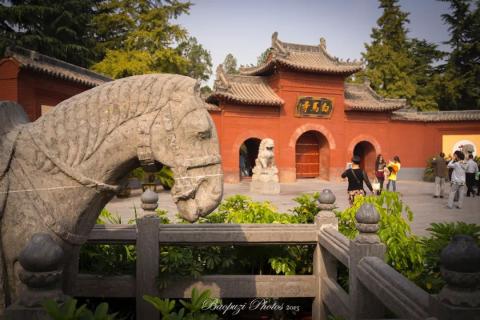
Before coming to White Horse Temple, I had also been to some temples. Although I also know the significance of White Horse Temple, I only stay at the level of understanding. But when I actually came here, I truly felt that the name of "The First Temple of the Ancestral Court" was well-deserved.
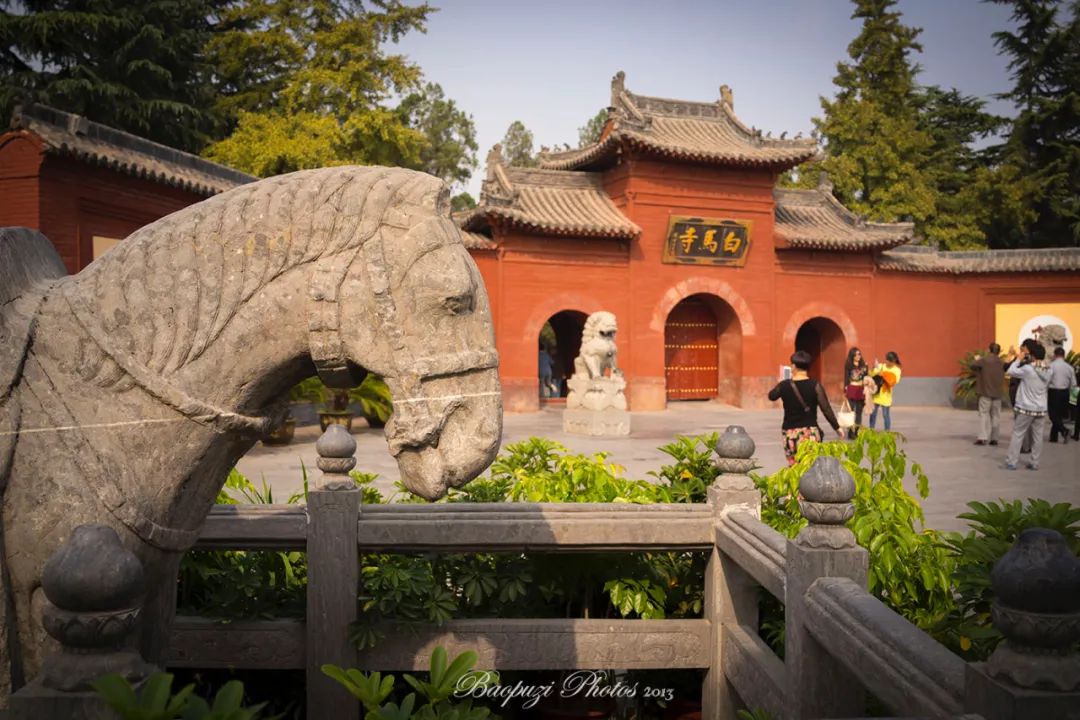
According to legend, Emperor Ming of the Han Dynasty Liu Zhuang "sleeped in the Nangong at night and dreamed that the golden god's head was shining with white light and flying around the palace." The next day, he learned that the dream was Buddha, so he sent envoys Cai Yin, Qin Jing and others to the Western Regions to pray for Buddhist teachings.
Later, two eminent Indian monks, Zhu Falan and Shemo Teng, were invited to Luoyang and brought Buddhist scriptures and Buddha statues carried on white horses.
The next year, Emperor Ming of the Han Dynasty ordered the construction of the White Horse Temple to commemorate the arrival of Buddhism carried by the white horse in the Central Plains.
Since then, there has been the first ancient temple in China. Of course, it is also the world-famous Jialan, known as the "ancestral court" and "source of Buddhism" in China.
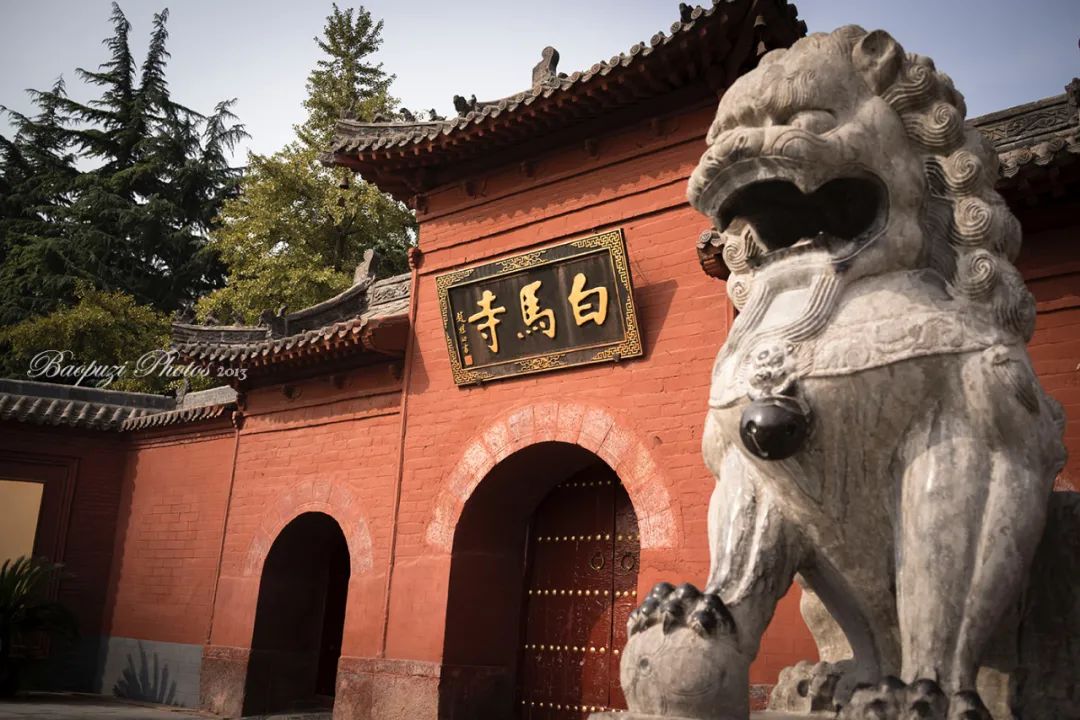 The gate of Baima Temple is simple and solemn. The red walls and green tiles reveal the richness of history. A pair of stone lions and a pair of stone horses stand on the left and right.
The gate of Baima Temple is simple and solemn. The red walls and green tiles reveal the richness of history. A pair of stone lions and a pair of stone horses stand on the left and right.
 There is an incense burner in front of the Great Buddha Hall. It is black in color, carved with patterns, and has a very simple and elegant shape.
There is an incense burner in front of the Great Buddha Hall. It is black in color, carved with patterns, and has a very simple and elegant shape.

The incense in Baima Temple is very popular. In those days, there was a free incense place in front of the Drum Tower. Incense was also placed on the tables at the entrance of many halls for worshipers to take for free. This is very similar to the high-priced incense sold in many temples. Different, people feel respected.
 There is a peach-like stone between the Main Hall and the Great Buddha Hall. It was the top of a pagoda in the Han Dynasty. It is said that touching it can increase happiness and longevity. Looking at how smooth and shiny it is, you can tell how many people touch it every day.
There is a peach-like stone between the Main Hall and the Great Buddha Hall. It was the top of a pagoda in the Han Dynasty. It is said that touching it can increase happiness and longevity. Looking at how smooth and shiny it is, you can tell how many people touch it every day.

 I photographed a monk reading scriptures inside the temple
I photographed a monk reading scriptures inside the temple
 There is another monk who is thinking
There is another monk who is thinking

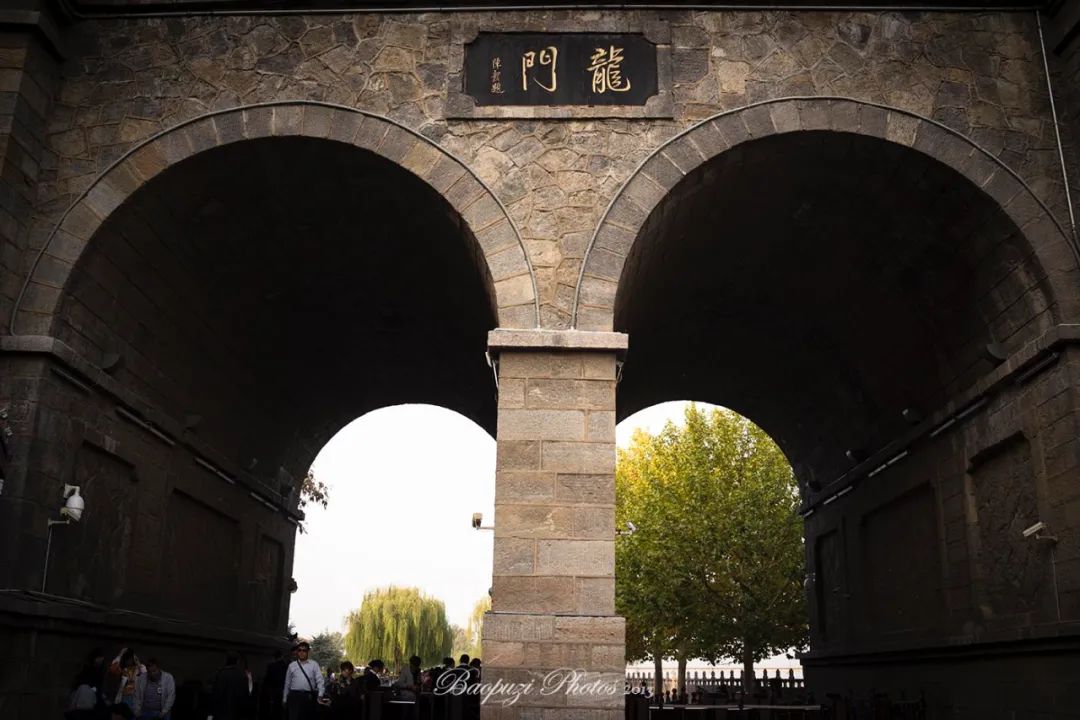 Anyone who has visited the Longmen Grottoes in Luoyang will be shocked by the majesty of the Buddha statues in the caves. Among them, the Great Lushena Statue Niche is the most prosperous. It has a history of more than 1,300 years and still looks solemn and kind.
Anyone who has visited the Longmen Grottoes in Luoyang will be shocked by the majesty of the Buddha statues in the caves. Among them, the Great Lushena Statue Niche is the most prosperous. It has a history of more than 1,300 years and still looks solemn and kind.
 Historically, Luoyang was the capital of the Eastern Han Dynasty, Northern Wei Dynasty, Wuzhou Dynasty and other dynasties. During the Eastern Han Dynasty, Buddhism began to be introduced into China and it was the center of Han culture. The emperors of the Northern Wei Dynasty generally advocated Buddhism, but Wu Zetian believed in Buddhism even more. In order to show their devotion to the Buddha, these dynasties built a lot of construction projects in Luoyang, and Longmen Grottoes is the most famous one.
Historically, Luoyang was the capital of the Eastern Han Dynasty, Northern Wei Dynasty, Wuzhou Dynasty and other dynasties. During the Eastern Han Dynasty, Buddhism began to be introduced into China and it was the center of Han culture. The emperors of the Northern Wei Dynasty generally advocated Buddhism, but Wu Zetian believed in Buddhism even more. In order to show their devotion to the Buddha, these dynasties built a lot of construction projects in Luoyang, and Longmen Grottoes is the most famous one.

 There are more than 1,300 caves, 2,345 Buddhist caves and Buddhist niches, more than 50 pagodas, and more than 100,000 Buddha statues in Longmen Grottoes. The largest Buddha statue is 17.14 meters high, and the smallest is only 2 centimeters. Xiansi and Guyang Cave are the most representative ones.
There are more than 1,300 caves, 2,345 Buddhist caves and Buddhist niches, more than 50 pagodas, and more than 100,000 Buddha statues in Longmen Grottoes. The largest Buddha statue is 17.14 meters high, and the smallest is only 2 centimeters. Xiansi and Guyang Cave are the most representative ones.





Standing on the opposite side and looking around, there are large and small grottoes carved on the cliff, just like Buddhist niches, which should originally contain exquisite murals and Buddha statues. Perhaps due to the baptism of time or the destruction by thieves, the big Buddha in the niche is now incomplete. But when I see these, I can’t help but be in awe of the ancients. Take the size of the Buddha statue as an example. Today we are not surprised by the 100-meter-tall building. But back thousands of years ago, when we saw the height of the Lushena Buddha statue, we were left with What we have is infinite admiration; in terms of the beauty of the Buddha statue, the backlight of the Buddha statue (that is, the aperture behind the Buddha statue) is like a blazing flame, constantly jumping up, showing an ultimate power; the face of the Buddha is It is peaceful and solemn, smiling but not smiling, and contains infinite profound meaning, just like the "Diamond Sutra" talks about all appearances and non-appearances!

 The Shaolin Temple began in the Northern and Southern Dynasties after the Three Kingdoms and the Jin Dynasty. During the period of Emperor Xiaowen of the Northern Wei Dynasty in AD 495, eminent Indian monks from the West came to teach Buddhism and built a temple in Shaolin Mountain near Luoyang, the capital.
The Shaolin Temple began in the Northern and Southern Dynasties after the Three Kingdoms and the Jin Dynasty. During the period of Emperor Xiaowen of the Northern Wei Dynasty in AD 495, eminent Indian monks from the West came to teach Buddhism and built a temple in Shaolin Mountain near Luoyang, the capital.
Songshan Mountain and Shaolin Temple are currently under the jurisdiction of Zhengzhou. Dengfeng originally belonged to Luoyang and was placed under Zhengzhou after the founding of the People's Republic of China. However, the fame and history of Songshan Mountain and Shaolin Temple are inseparable from Luoyang. The couplet on the door of Songyang Academy reads: "Near the four sides are the Central Government, Taihua, Hengheng, the Four Seas, the Guanhe River, and the Shenshan Mountain. Through the nine dynasties, it has been the city, including Yizhen, Luojian, three winds and rain, and the mountains." The city of the Nine Dynasties refers to the city. Luoyang, Yishan and Luojian are the four rivers in Luoyang; the center refers to Luoyang in the world; the Shaolin Temple was built during the reign of Emperor Xiaowen. Therefore, I still classify Shaolin Temple into the Luoyang chapter.

 Shaolin martial arts performance.
Shaolin martial arts performance.






 Foreigners are no exception, taking photos in front of the statue of Bodhidharma.
Foreigners are no exception, taking photos in front of the statue of Bodhidharma.
 After Bodhidharma, a disciple of Sakyamuni, came to the temple, he practiced in a cave, which was just one foot square. Later generations called the abbot of Shaolin Temple the abbot.
After Bodhidharma, a disciple of Sakyamuni, came to the temple, he practiced in a cave, which was just one foot square. Later generations called the abbot of Shaolin Temple the abbot.

 About 300 meters west of Shaolin Temple, there is also the largest pagoda forest in China. What is very advantageous is that it borders Shaoxi in the south, Longhu Ridge in the back, Niu Mountain Range in the east, and Dangyangpo in the west. The scenery there is very beautiful, and it is the tomb of Shaolin's eminent monks and abbots. .
About 300 meters west of Shaolin Temple, there is also the largest pagoda forest in China. What is very advantageous is that it borders Shaoxi in the south, Longhu Ridge in the back, Niu Mountain Range in the east, and Dangyangpo in the west. The scenery there is very beautiful, and it is the tomb of Shaolin's eminent monks and abbots. .

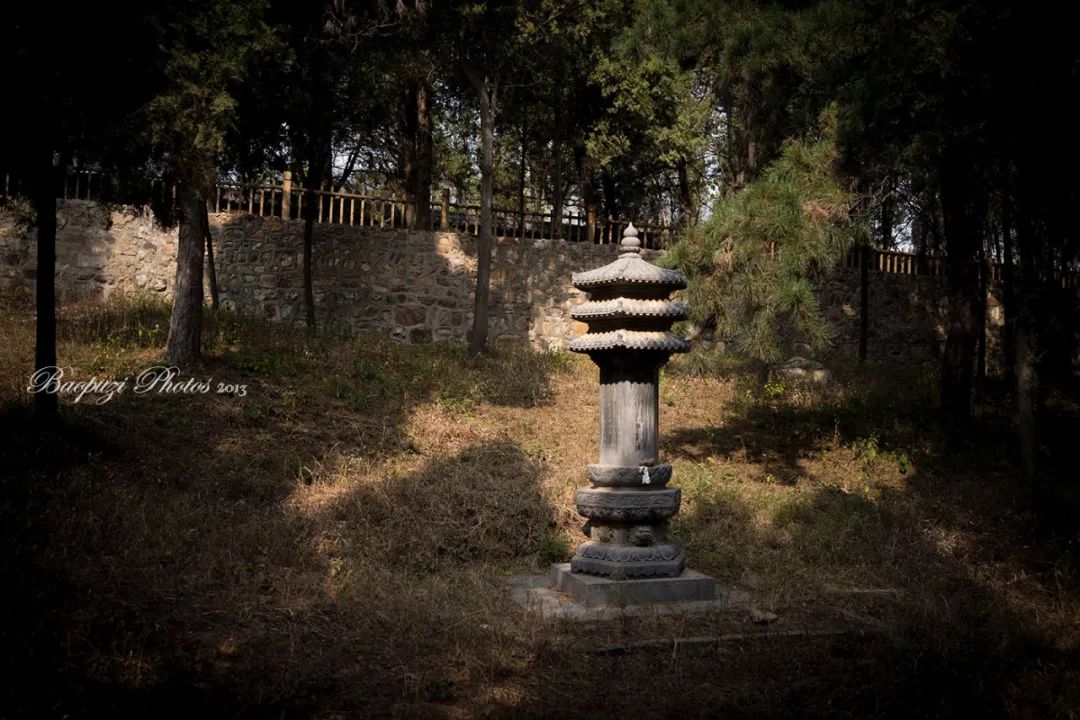
Related Reading:
The Beijing I photographed in those years: Dashilan, Imperial College and Ditan Temple Fair
The magical cities I photographed in those years: the Bund, alleys and Zhujiajiao
The southern Xinjiang I photographed in those years: Baisha Lake, Muztage Peak and Gaotai Residential Houses
The northern Xinjiang I photographed in those years: Nalati Grassland, Sailimu Lake and Hemu Village
The Yangzhou I photographed in those years: Slender West Lake, ancient canal, gardens and others
The Huizhou I photographed in those years: pink walls and black tiles, Tangyue Archway and Xin'an River
The Lhasa I photographed in those years: Majia Ami, Drepung Monastery and Potala Palace
The Siguniang Mountains I photographed in those years: snow-capped mountains, meadows, and dead tree beaches
The Jiaju Tibetan Village I photographed in those years: the mountains, the village, and the people
Kasumigaura that I photographed in those years
The egrets I photographed in those years
The rape flowers I took photos of in those years
